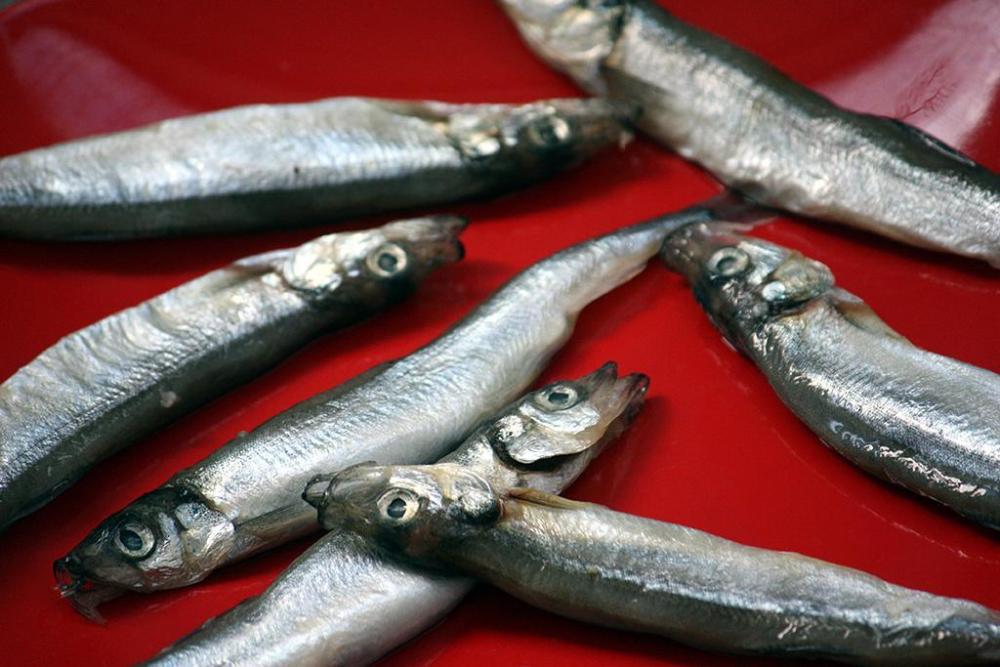Here is another occasional visitor to the fish slabs here. Officially, 毛鳞鱼 (máo lín yú, literally 'hairy fin fish', a direct translation of the Latin name, Mallotus villosus.) but round here more often 多春鱼 (duō chūn yú, literally 'much love fish' referring to its fecudity), Capelin may, in people’s minds, be more associated with the Northern Atlantic, but they are also native to the North Pacific Ocean and Bering Sea including the waters off China’s north-eastern provinces, particularly Jilin and Liaoning.

Licenced under Creative Commons Attribution-Noncommercial 3.0 Unported License. Citation: AquaMaps (2019, October). Computer generated distribution maps for Mallotus villosus (Capelin), with modelled year 2050 native range map based on IPCC RCP8.5 emissions scenario. Retrieved from https://www.aquamaps.org.
At spawning time in spring, thousands of these fish shoal onto sand and gravel bottoms or sandy beaches to do their parenting. Most then die after spawning (especially the males), if not caught first.
The fish are relatively small with the males usually around 15 cm / 6 inches in length and the females outgrowing them to around 20 cm / 8 inches.
The females are more prized as, in season, most will be carrying a full load of roe. This is popular in Japan where it is used as a cheaper but inferior substitute for flying fish roe. It is often mixed with wasabi or more likely green food dye and marketed as ‘wasabi caviar’.
Capelin Roe
The fish themselves are good eating, tasting somewhat similar to herring. Best fried.
Fried Capelin






